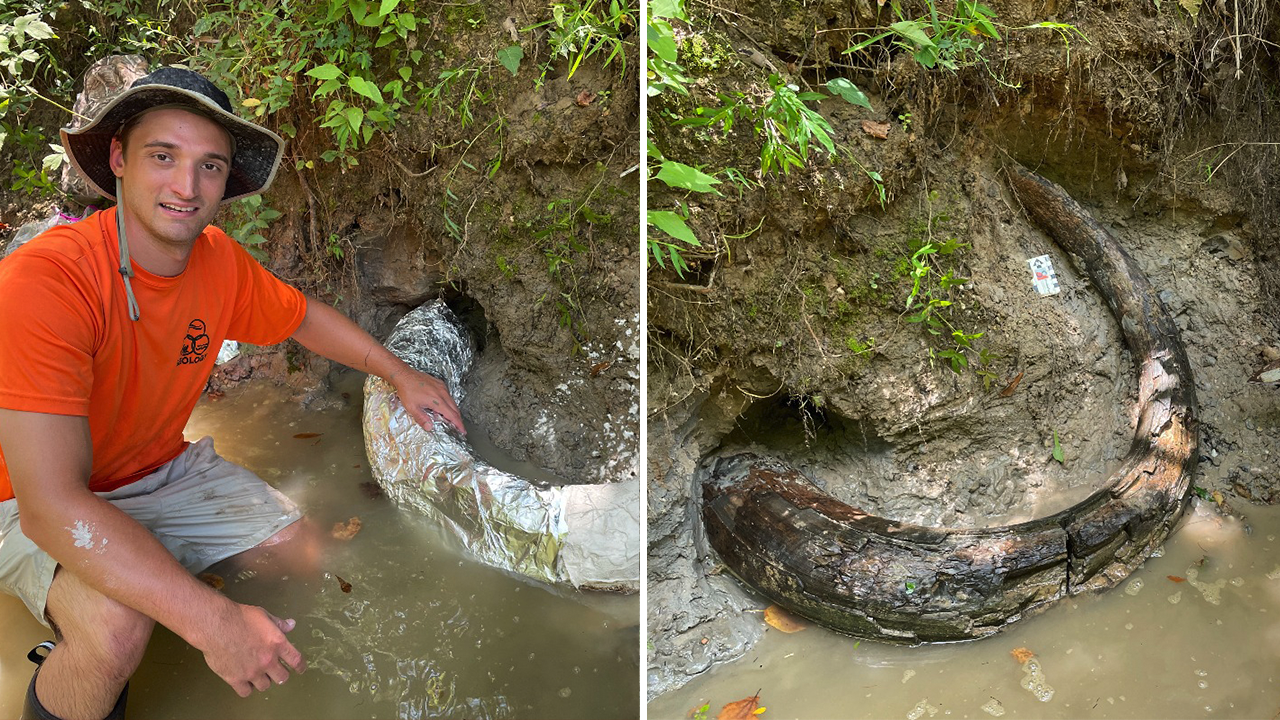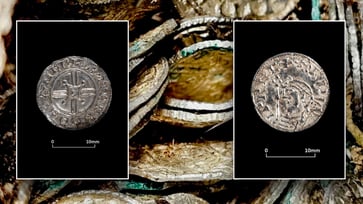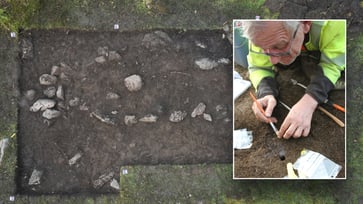In Mississippi, a man unearths a rare mammoth tusk dating back to the Ice Age.
A man discovered a 7-foot mammoth tusk while exploring the waters of Madison County, Mississippi.

A recent discovery made by an artifact and fossil collector has been brought to the attention of the Mississippi Department of Environmental Quality (MDEQ).
While exploring in Madison County, Eddie Templeton discovered a fragment of a Columbian mammoth tusk from the Ice Age era in a steep embankment.
The Mississippi Museum of Natural Science collaborated with DEQ’s Mississippi State Geological Survey scientists to excavate and stabilize the tusk.
The ivory fossil, measuring 7 feet long, was exposed by Templeton and the team after they spent a whole day cleaning the tusk.

According to a MDEQ press release, it was suspected that Eddie and his team were dealing with a Columbian mammoth, based on the strong curvature of the massive tusk. This would be the first of its kind for the area.
A mammoth tusk was confirmed to belong to by paleontologists at the Mississippi Museum of Natural Science.
During the last ice age, Mississippi was home to three Proboscideans: Mastodon, Gomphothere, and the Columbian mammoth. All three of these creatures possessed ivory tusks. Mastodons are the most common Proboscidean finds in Mississippi as they were browsers, similar to modern deer, and inhabited a variety of different environments.
For more Lifestyle articles, visit planetchronicle.net/lifestyle.
The MDEQ states that Columbian mammoths were larger than wooly mammoths found in colder, northern regions of North America, reaching up to 15 feet in length and weighing over 10 tons.

The release stated that these large mammals played a crucial role in preserving the rich and fertile prairie ecosystem, just as their modern elephant relatives do in other parts of the world today. The ice-age prairie ecosystem of what is now Madison County was also inhabited by extinct horses, giant bison, giant ground sloths, giant tortoises, and tapirs.
By covering the fossil with aluminum foil and burlap, scientists made a plaster jacket to gain more insights about the animal.
"The ancient sandbar of a stream was the location where our field scientists found a mammoth tusk specimen leaning up against the edge of the sandbar, with a portion of it resting on the floor of the stream channel."
The release stated that this would have been just before the fossil was completely covered with alluvium, possibly due to a storm causing a major flooding event.

The animal was likely dead nearby, and its remains were transported along the stream's course.
The release stated that Eddie's discovery provides a rare glimpse into the Columbian mammoths that once inhabited Madison County along the Jackson Prairie of central Mississippi.
The MDEQ and Eddie Templeton were contacted by Planet Chronicle Digital for further comment.
lifestyle
You might also like
- Post-inauguration, the surprising truths about DC travel costs.
- Melania and Donald Trump celebrate their 20th wedding anniversary: View the images.
- John Schneider, known for his role in 'Dukes of Hazzard,' remains steadfast in his belief: "God has a plan."
- Notre Dame football coach and Catholic convert is 'not shy about' the importance of faith.
- Trump confidant and unofficial spiritual advisor: "God is granting America another opportunity"



















